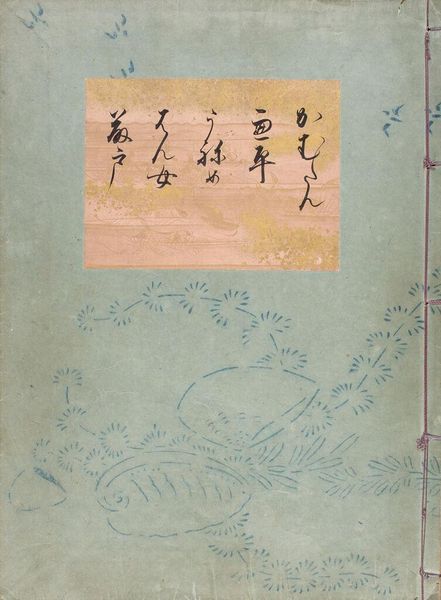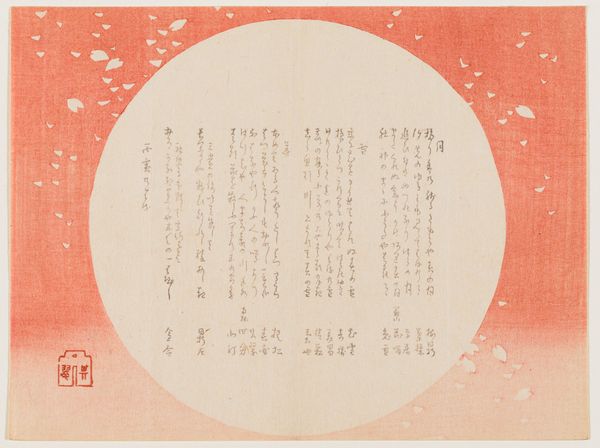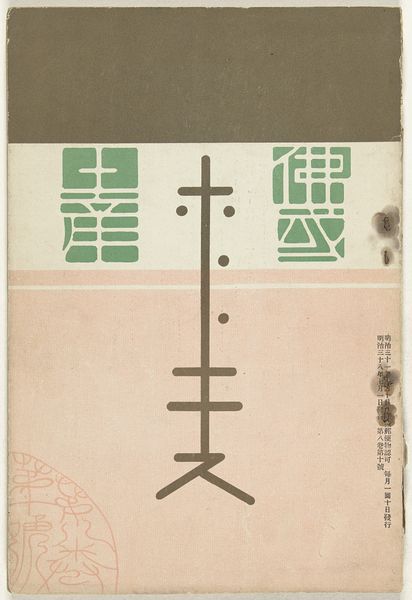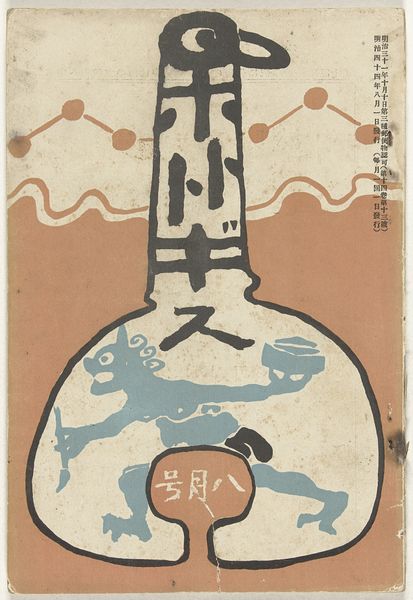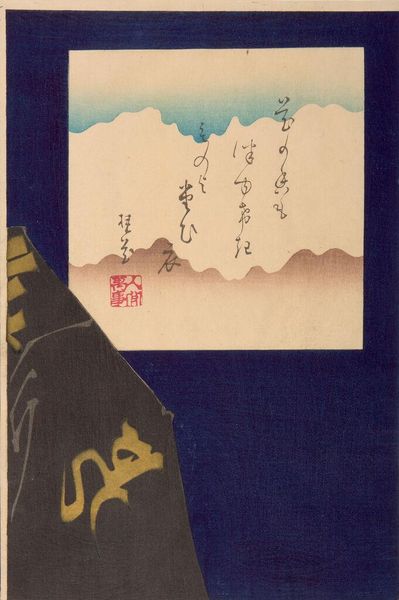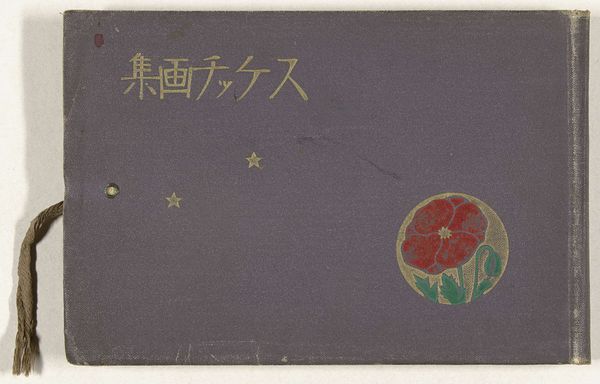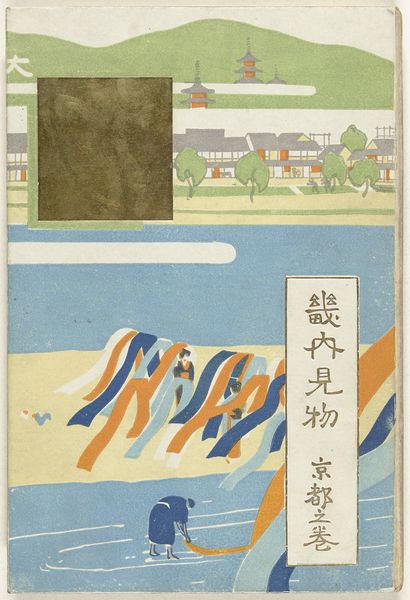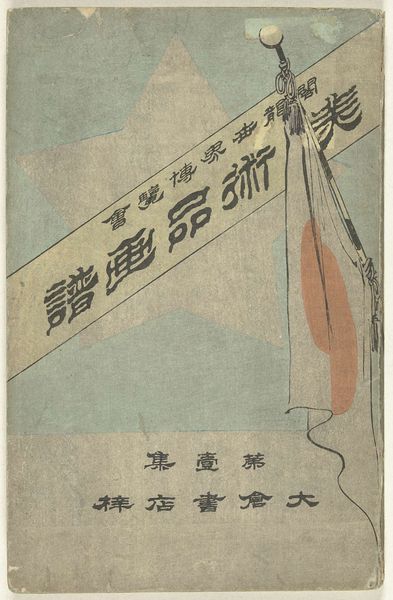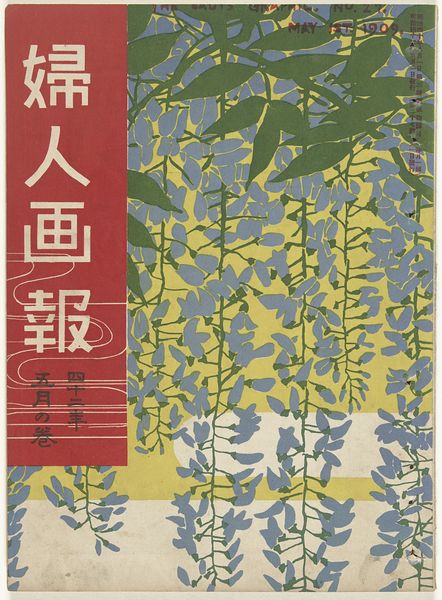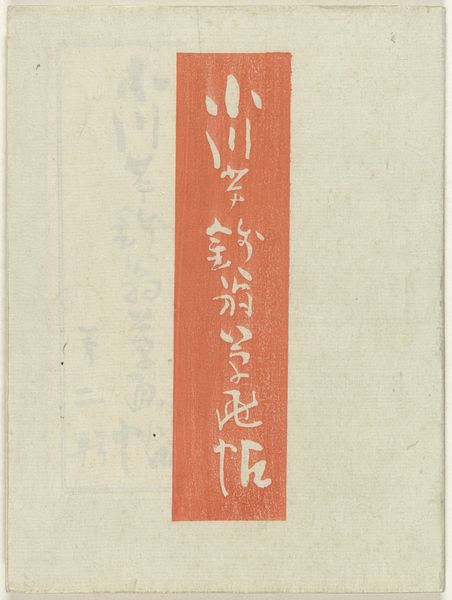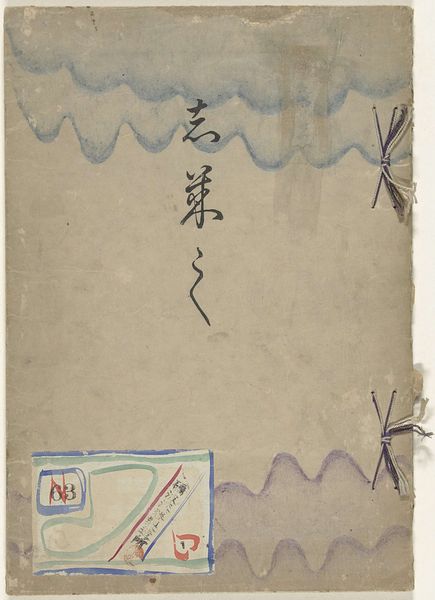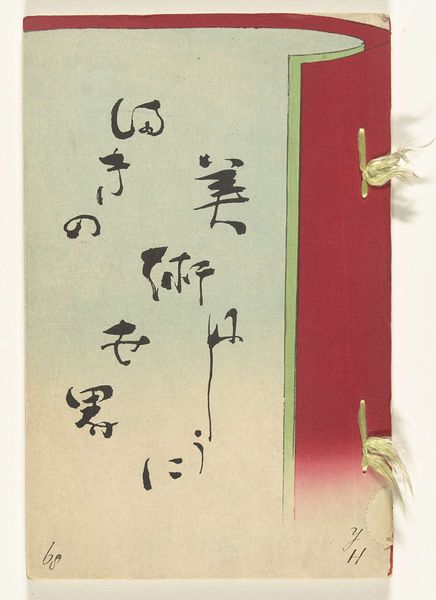
Dimensions: height 223 mm, width 152 mm
Copyright: Rijks Museum: Open Domain
Curator: Let’s discuss this Kabuki program from the 1930s, currently housed at the Rijksmuseum. Its composition feels strikingly modern, even now. What’s your initial impression? Editor: The colour palette and those distinct flat planes! There's an arresting tension between the vertical text and the soft, almost dreamlike rendering of the landscape elements, like the clouds and foliage. Curator: Precisely. What interests me is the way this print situates Kabuki, a traditionally bourgeois art form, within a wider societal context. Programs such as this circulated information about the play, performers, and schedule. I see this as a site of negotiated cultural values. Editor: And we can also talk about the materiality, which is core to its meaning. The creation of these woodblock prints – each layer requiring careful carving and registration – speaks to the skilled labor involved in not just the theatre production itself, but its broader promotion and consumption. These weren’t simply mass-produced items, but rather intricately crafted objects meant for relatively disposable use. Curator: Right, and think of the layers of performance embedded here. It’s not just an advertisement. The act of purchasing this program is, in itself, a part of the performative Kabuki experience. It creates another intersectional level where social roles intersect, with gender, class, and politics affecting the theatre world. Editor: Absolutely. Examining the individual processes involved reveals social layers often hidden in plain sight. Someone chose these colours; others physically carved the blocks; and yet more distributed and sold the final programs. These are processes intimately tied to cultural trends. What are the underlying assumptions behind such efforts? Curator: We're peeling back layer upon layer, unearthing meaning as we go! This program’s visual aesthetic, deeply rooted in a very particular time period and place, intersects beautifully with the spectacle of Kabuki. Editor: Looking at this work, I’m left thinking about the tangible process behind such seemingly simple ephemera and how much insight that material reality offers. Curator: Yes, this visual record of Kabuki offers many viewpoints to evaluate Japanese culture and the power structures it upheld in society. Editor: I see a humble print transformed into something that encapsulates an entire network of makers, consumers, and contexts. Fascinating.
Comments
No comments
Be the first to comment and join the conversation on the ultimate creative platform.
